Remove the fuel rail to access other parts and assemblies, as well as to replace the injectors
Preparing the car for the task
We reduce the pressure in the fuel supply system, as described in previous articles
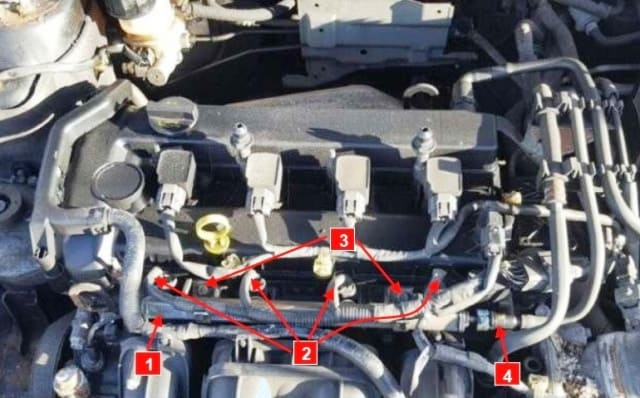
Disconnect the negative battery terminal

Remove the decorative engine cover
Disconnect the wire blocks from the injectors

We move the clamps and disconnect the supply line from the fuel rail fitting
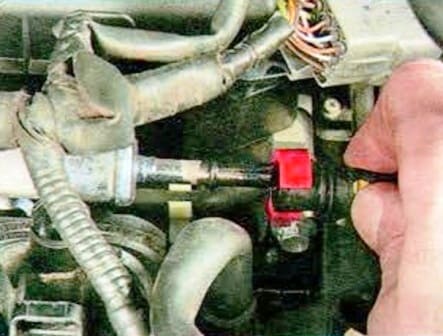
We unscrew the two bolts of the fuel rail
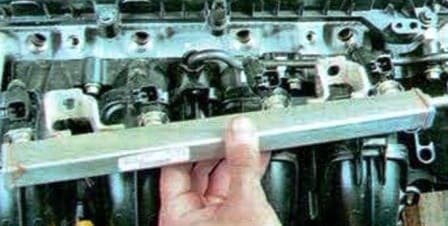
Remove the fuel rail by removing the injectors from the holes in the cylinder head
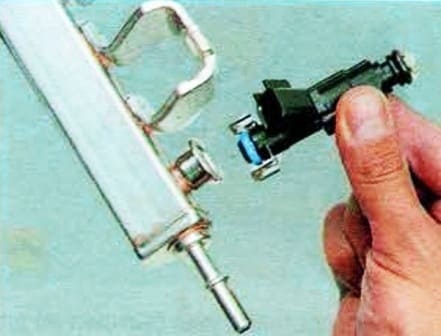
If the injectors remain in the cylinder head when removing the ramp, carefully remove them
Remove the injectors from the fuel rail
Install the fuel rail in reverse order, replacing the O-rings
Before installation, lubricate the O-rings of the injectors with engine oil
We start the engine and check the tightness of the pipeline connections and nozzle seals
Removing and checking fuel injectors
Signs of malfunctioning injectors:
- - difficulty starting the engine;
- - unstable engine operation;
- - stop the engine at idle;
- - increased idle speed of the crankshaft;
- - the engine does not develop full power, it is not throttled enough;
- - jerks and dips in the engine when the car is moving;
- - increased fuel consumption;
- - glow ignition due to leakage of injectors
Remove the fuel rail as described above
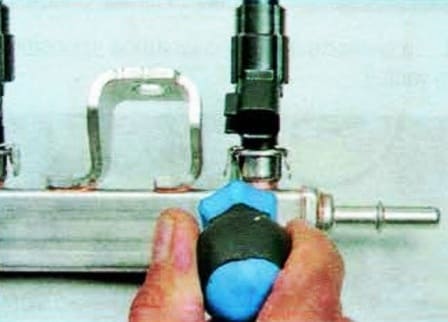
Pry off the clamps and remove the injectors from the holes of the fuel rail

Check the resistance of the injector winding by connecting the probes of the autotester to the winding terminals
The resistance of a good injector should be 12-14 ohms at 20º C
If the resistance of the winding is not correct, replace the nozzle
O-rings must be replaced each time the injectors are removed
Before installing the injectors, lubricate the O-rings with engine oil
Install the nozzles and all parts in the reverse order





